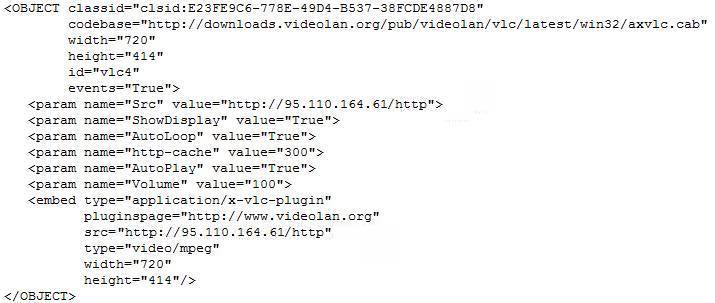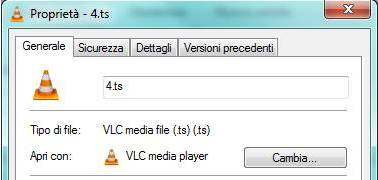What are these streams and what is required to view them
First of all: VLC
To view these stream (all them are DVB transport streams excluding one mpeg4 wrapper) is required videolan VLC now at 2.1.2 version.
On the web can be found other Transport Stream player, but for my knowledge VLC is the most powerful and complete player (and much more). And it is open source (free for non-commercial purposes).
Once installed VLC you'll be able to open directly these streams, avoiding any web page that include them
If you have never used VLC, maybe can be useful take a look to this page.
In what they differs from the other streaming of the web?
From the former page is possible to reach all the http live streaming tests I'm conducting from cloud.
The common characteristic of these test is that despite being streamed in unicast, the generator (VLC) and consequently Apache streaming server
erogate only one stream plus all the packets repetition required by the remote clients.
In other words, in case of heavy load there should be no overload of server that will continue to stream one only stream.
The edge http chaches scattered worldwide should be able to handle these stream without problem.
If the player do not receive the right packets in time for their presentation, as in ordinary broadcast TV, this will bring to a blocketisation or to a frame skip.
In fact if the player hangs, reloading the clip it will not start from the beginning but from the time in which has come.
To play an embedded stream is required a plug-in depending on the used browser.
Internet explorer (that uses an active-x module), depending on the safety features set, may require the authorisation to load from the active-x module (axvlc.cab) from the web using
the address contained in the html page.

For Netscape derivated browser (Firefox, Chrome, Opera and Safari) which use the EMBED section, all depends
on the mime type associations, and generally require the mozilla VLC plug-in or what stated by the
the mime type association of transport stream, i.e. from how the operating system open the many data type it can be requested to decode.
These browser usually require to have installed VLC (open source now at 2.0.2 version, available for PC as well
OSX, linux and other operating systems, downloadable free from www.videolan.org), which setup
install by default the mozilla plug-in if a mozilla derivated browser is found.

To inspect them, in windows, right click on a .ts file, then properties. In Mac, for which is also available VLC, will be probably something alike,
despite by the approach “it make all by itself” is possible the behavior is fixed by Steve Jobs heirs and friends.
If you use the computer for specific audio or video processing it is always good to inspect that setup
do not changes the critical associations ofr the processing you do (but it seems to remember VLC setup work honestly and fine…).
Done this it should work without problems.
These video streams are not thought for i-pad and i-phone reproduction because I'm not using
the dynamic streaming, practically a playlist of small pieces locally downloaded from server and progressively deleted after their playing.
I'm streaming real DVB streams in http that should be cached by the web http caches placed on of the boundaries of the web.
The http caches temporary store accessed http packets avoiding their reload if those same packets are recalled by another browser connected to tha cache.
These stream are stored locally (cached on local storage) only for a couple of seconds around the viewing point.
They are not randomly accessible (this is not a VoD service, Video on Demand) and in fact, using VLC, you can see a grayed useless timeline.
They can be dump (again using VLC), but being an infinite loop, that never starts and never ends, the dump can produce a very very big file.
The streaming future is not done as these test I'm conducting, but probably replaced by MPEG DASH
(Dynamic Adaptive Streaming over Http), that starting from Adobe Http Live Streaming, Adobe Http Dynamic Streaming and Microsoft Smooth Streaming is
trying to set rules. Microsoft and
Adobe said YES to DASH.
Also EBU (European Broadcasting Union) seems oriented to suggest its adoption.
Mozilla (whose Firefox owns the 25% of browser market and is supporting html5), is very interested
but will adhere only when will be shure that DASH does not hide any proprietary technology subject to royalty. See this
interesting article
index.html

